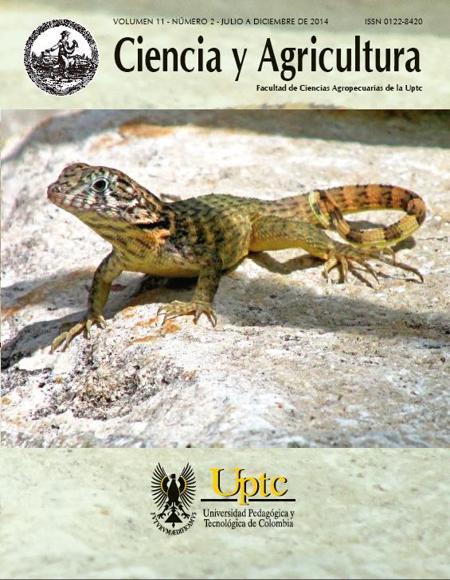Effect of supplementation with food rich in fatty acids on bovine milk performance and composition

Abstract
The effect of supplementation with food rich in fatty acids on bovine milk performance and composition was evaluated. We worked with 15 Holstein cows, multiparous, on the second third of lactation. The animals were divided into control group, group 1 and group 2. We formulated three diets containing 16% crude protein and 1,73 Mcal ENL, and set 7 days for habituation and 83 for trial. We evaluated production (kg), fat (%), protein (%), non-fat solids, lactose (%) and density (g/ml) using the integral Lactoscan® milk analyzer. The diets consist of a staple food and the supplement to try that was added in amounts according to the maximum participation for ruminants. The staple food were alfalfa meal, rice flour, wheat bran, molasses and mineral premix, and the supplements to try were soybean meal and protected fat. We used a completely randomized experimental design and compared the data with the repeated measures ANOVA in R (v. i386). The results show that milk production increased significantly (P =< 0.05) after supplementation wuth soybean meal and fat protected reached in the control group. Although it is possible to increase production (kg/ day), the milk composition parameters did not improve, possibly due to the metabolic abnormality that may occur after ruminal fermentation of fats, and the alteration of the fatty acids mammary synthesis. KeywoKeywords
soybean meal, protected fat, holstein
References
- Gagliostro, G., & Schroeder, G. (2007). Efectos de la suplementación con sales cálcicas de ácidos grasos insaturados sobre la digestión ruminal en vacas lecheras en pastoreo. Archivos Latinoamericanos de Produccion Animal, 15.
- Elizondo, J. (2002). Estimación lineal de los requerimientos nutricionales del NRC para ganado de leche. Agronomía Mesoamericana, 41-1.
- Bernall, J. H., & & Serna, C. M. (1989). El modelo animal y su comparación con otras ayudas de selección, para producción de leche. Revista facultad agronomia nacional, 51-64.
- Venturoso, R. C., & Almeida, K. E. (2007). Determination of the physical-chemical composition of dairy products: exploratory
- study to compare the results obtained by classic methodology and by ultra-sound. Revista Brasileira de Ciências Farmacêuticas, 607-613.
- Robb, E., & Chalupa, W. (1987). Lactational responses in early lactation to calcium salts of long-chain fatty acid. Journal of Dairy Science, 220-229.
- Ruegsegger, G., & Schultz, L. (1985). Response of High Producing Dairy Cows in Early Lactation to the Feeding of Heat-Treated Whole Soybeans. Journal of Dairy Science, 3272-3179.
- Palmquist, D. (1991). Influence of source and amount of dietary fat on digestibility in lactating cows. Journal of Dairy Science, 1354-1360.
- Chilliard, Y., & Ferlay, A. (2007). Rumen biohydrogenation and nutritional quality of cow and goat milk fat. European Journal of Lipid Science and Technology, 828-855.
- Vernon, R., & Flint, D. (1988). Lipid metabolism in farm animals. Proceedings of the Nutrition Society, 287-293.
- Hansen, H., & Knudsen, J. (1987). Effect of exogenous long-chain fatty acids on lipid biosynthesis synthesis in dispersed ruminant mammary gland cells: esterification of long-chain exogenous fatty acids. Journal of Dairy Scienece, 1344-1349.
- Gaynor, P. (1994). Milk fat yield and composition during abomasal infusion of cis or trans octadecenoates in Holstein cows. Europa Journal Lipids Technology, 157-165.
Downloads
Download data is not yet available.